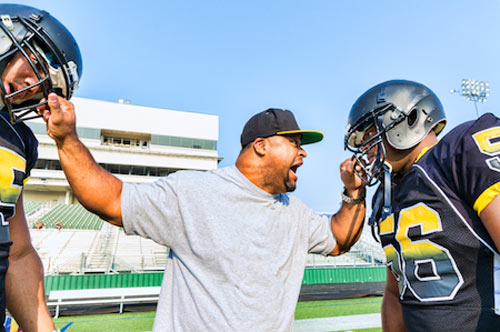If you ask a manager, “How do you determine the Gap or uncover the root cause as to why someone is a top performer and why someone is underperforming?” The most common response: “I look at their numbers. I look at their activity. I look at their results.” The challenge is that reports and activities only tell you WHAT they’re doing. They don’t tell you HOW they do things. And that’s what makes the difference between an A player and a C player. Discover how to get your people asking to be observed on the job, rather than running from it, to immediately improve performance.
Great managers take the time to objectively uncover the Gap and get an accurate assessment of their performance. In fact, there are only three ways to uncover the Gap or developmental opportunity. They are through:
- Evaluation
- Conversation
- Observation
While reports, forecasts, and metrics are essential, data and reports only show you what people are doing, not why or how people perform.
That’s why observation and coaching must also be leveraged.
Keep in mind, observation is not limited to what you see, but also what you hear, read and, what your intuition or gut might be telling you.
Here are 10 opportunities for observation.
- Written communication
- Verbal communication
- Presentations
- Team engagement, collaboration, and coaching
- Time management/organization
- Handling stress and upsets
- Listening skills
- Disposition/appearance
- Attitude and
- Coachability
While counterintuitive, after recognizing a coaching opportunity, rather than start the conversation by sharing your observations, lead the conversation with questions that help the coachee self-assess so they can do a personal analysis without being tainted by your opinion.
Starting the debrief with comments like, “How long have you been selling?” or “Here’s what you did wrong, and what you should have done,” does nothing more than turn off people’s listening and erode trust and confidence.
Stop Telling People What They See and Ask Them, Instead
However, before shifting into observation mode, you must set or reset expectations around observation, what it is and the benefit your employees will realize. Since most employees run the other way when they hear they’re going to be observed, it’s essential to create alignment and buy-in by enrolling your team around a healthier definition of what observation entails, its value, why it’s essential for personal growth, and how, just like professional athletes, they always have a coach on the sidelines observing the things they can improve upon that they can’t see themselves.
Here are six coaching questions to facilitate a self-assessment, build personal accountability, and avoid the risk of redundancy or telling the person something that they already know.
- How do you feel that meeting went? What did you learn?
- How did it feel when delivering your presentation or having that conversation?
- What did you do well?
- Where do you feel you got stuck?
- What, if anything, could you have done differently?
- What, if anything, do you need to improve or change to achieve better results the next time?
Once you know what they have observed and learned, and what they missed, now it’s time to share your observations and ideas, after they’ve had a chance to self-diagnose.
But before you share anything, make sure you set clear, positive intent around WHY you’re sharing them, using this enrollment question, which also asks for permission to engage further, so they know what’s in it for them and as a result, they’ll be open to hearing your ideas.
“I want to make sure I support you the best way I can. May I share a few things I observed and some ideas that would help you become more successful?”
After sharing only one or two observations to avoid overwhelm, ask the following two questions to confirm their next steps to build momentum, and accountability around positive change.
- What will you be working on prior to the next meeting you have, so you can achieve the results you want?
- Would you be open to bringing what we discussed into our next scheduled coaching session, so we have the time to work through these observations and give them the attention they deserve?
People are more open to your ideas when responding to solution-driven, rather than problem-focused questions, which put them on the defensive.
If there’s one reason to make observation your priority, consider this.
People cannot change what they do not see.
Athletes can’t self-diagnose in the middle of the game. They’re playing to win, and so is your team. That’s why great leaders and top performers don’t always do different things. They just do things differently.




